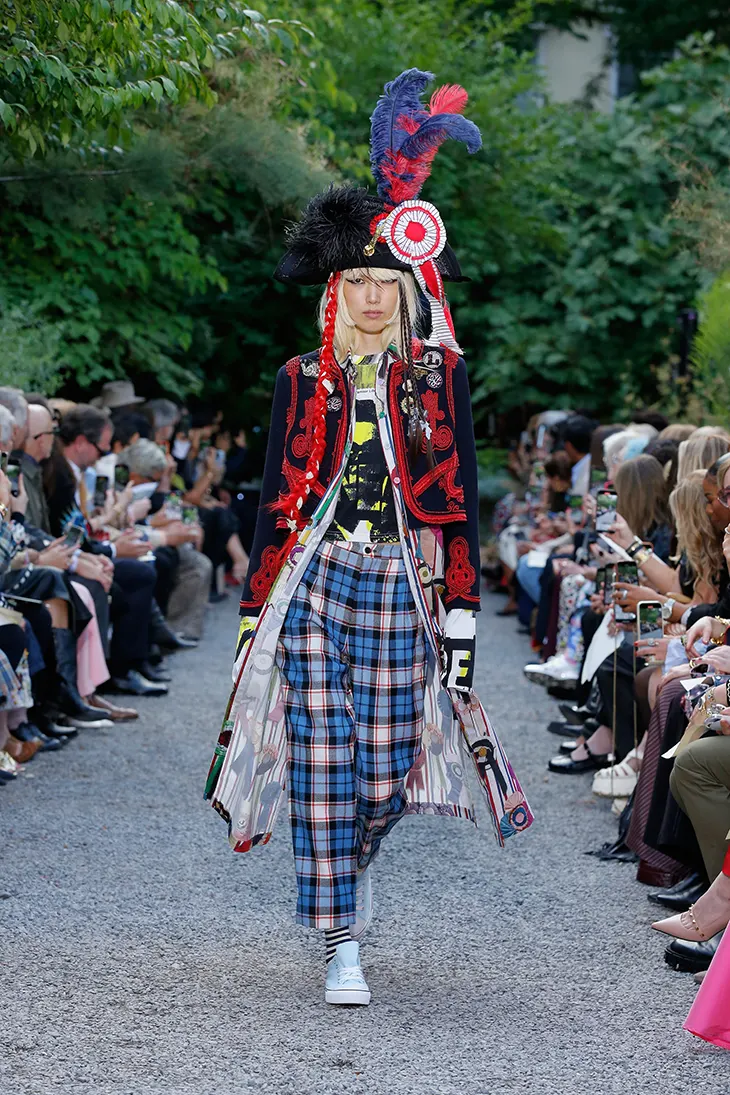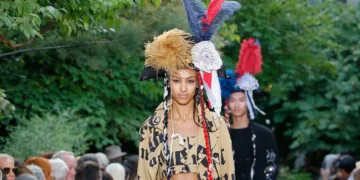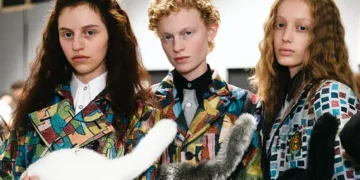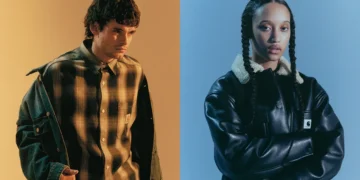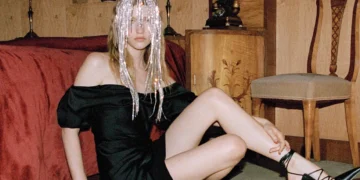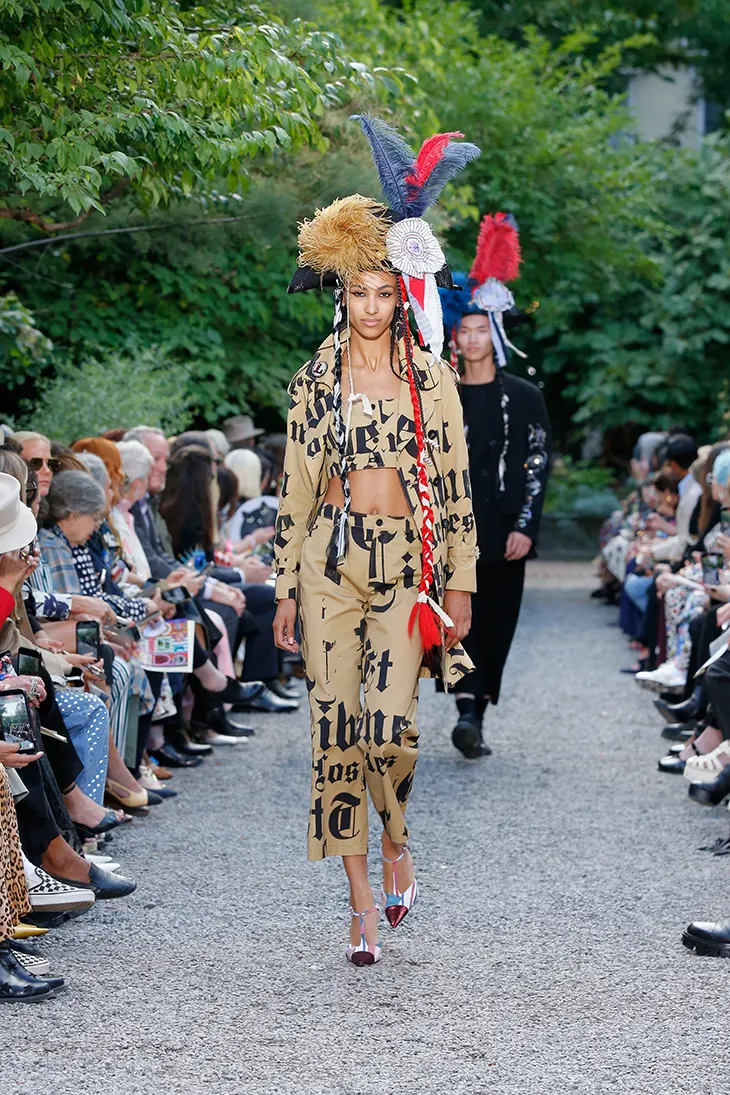
Libertine presented its Spring Summer 2026 collection at New York Fashion Week, at Elizabeth Street Garden. Johnson Hartig used the setting to stage a show that drew together poetry, art, and personal inspiration. Guests including Martha Stewart, Cyndi Lauper, Thom Browne, Theodora Richards, and Christina Hendricks attended, bringing a sense of cultural weight to the evening.
The designer framed the collection around the John Keats verse “Beauty is truth, truth beauty, – that is all / Ye know on earth, and all ye need to know.” The line anchored a narrative that sees beauty not as an accessory but as an essential force. Hartig positioned beauty as a response to chaos and division, a reminder of clarity and what remains worth protecting. He described beauty as necessary as air or water, a quiet protest against despair.
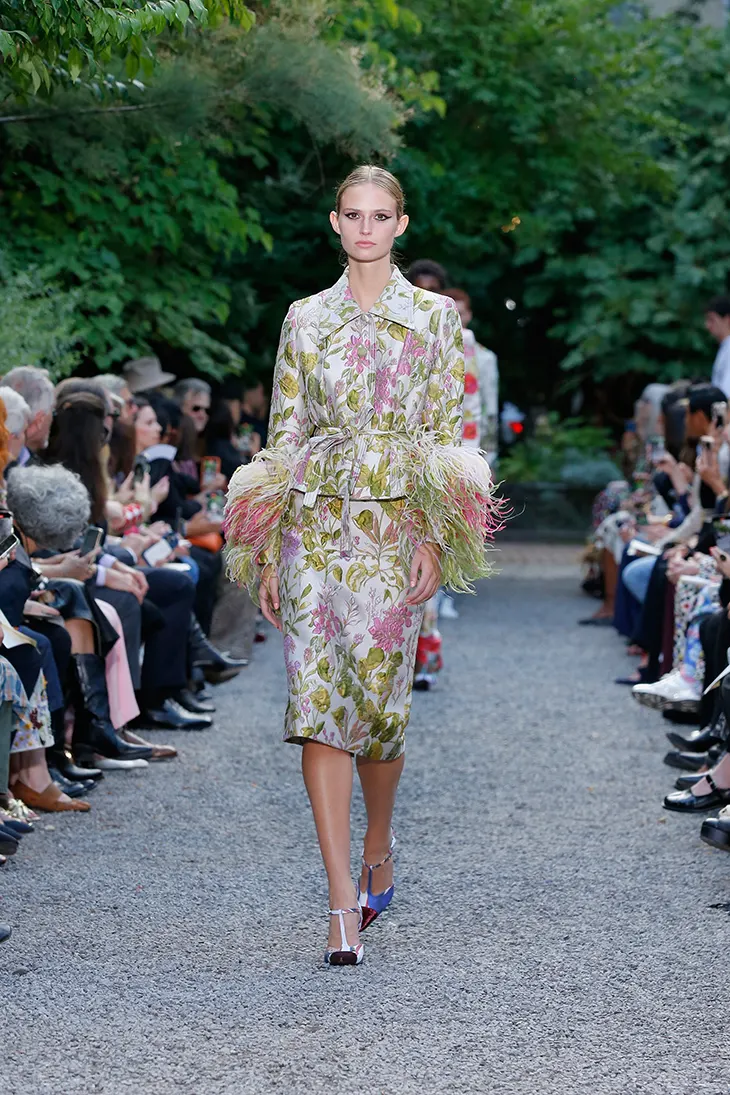
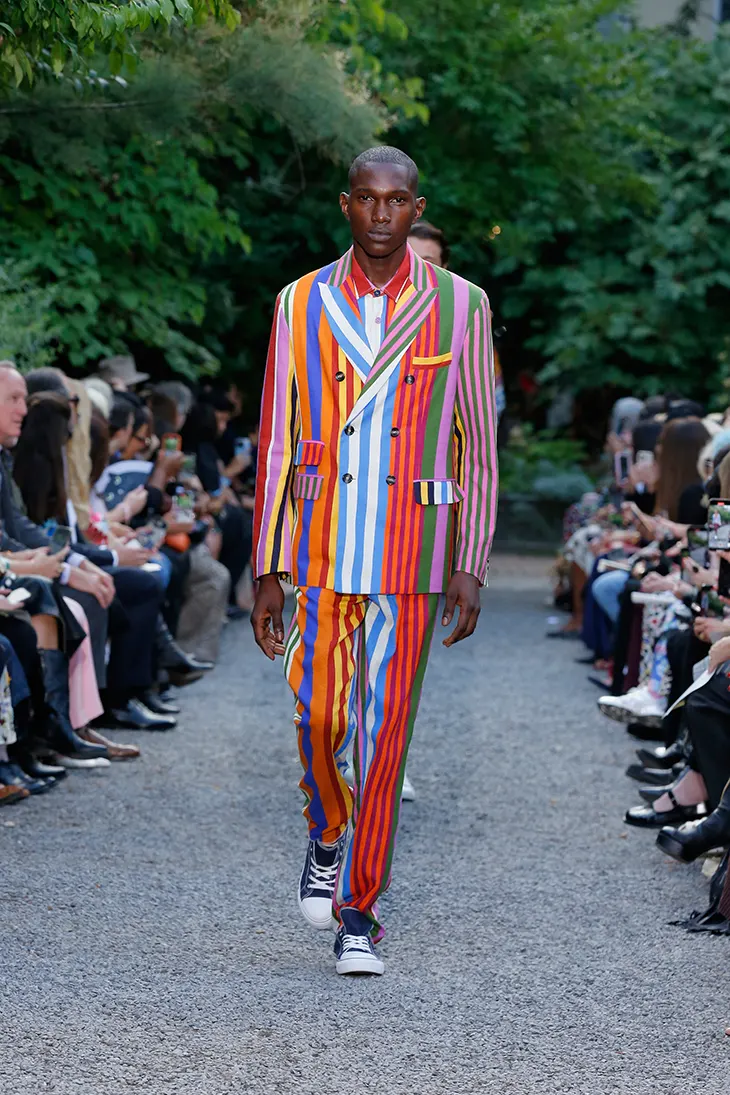
From this philosophy emerged the central theme: a love revolution. Hartig defined it as a call to reclaim joy, humanity, and honesty when everything feels fractured. The collection expressed this through texture, print, and silhouette, encouraging an embrace of life in full sensory depth. It balanced optimism with introspection, offering pieces designed to serve both practical and emotional needs.
Visual influences came from surrealist painter René Magritte. The “Magritte Cloud” print floated through the show, an image charged with absurd optimism and dreamlike potential. Hartig contrasted this with hollyhock prints, drawn from 15th and 16th-century botanical illustrations. Hollyhocks, tall and commanding, carried symbolic meaning, admiration and aspiration, while underscoring beauty as something just out of reach yet persistently motivating.
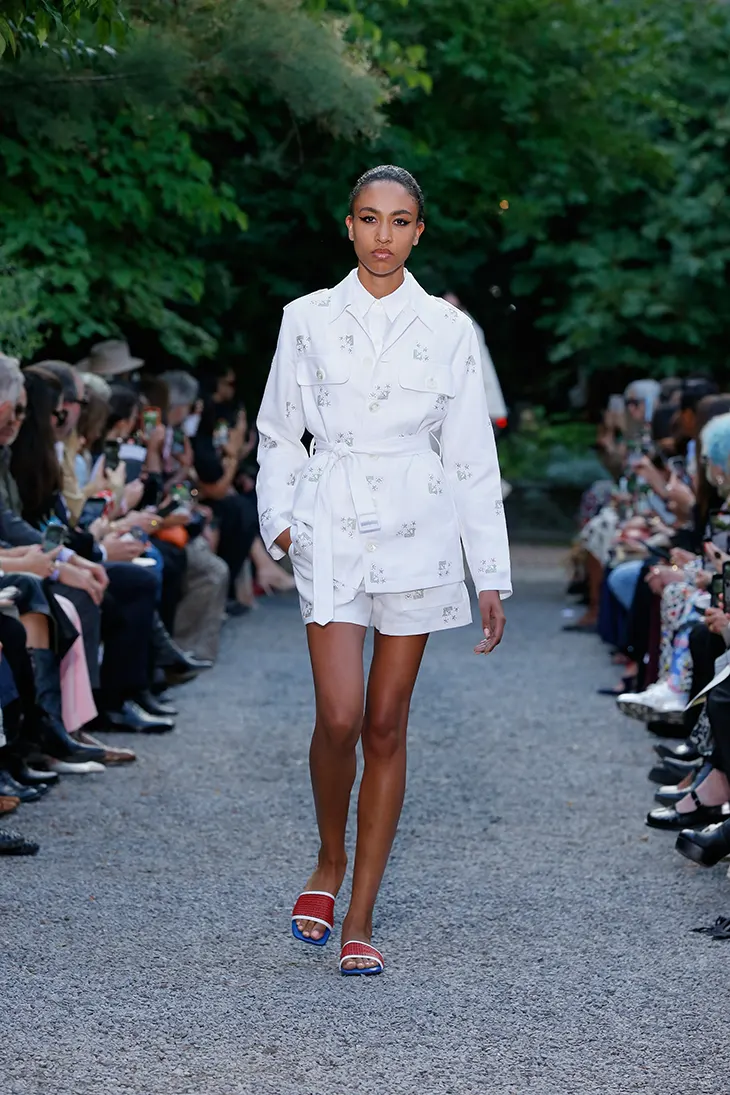
Hartig’s personal passion for nurturing plants shaped the metaphor for this season. Gardening requires patience and care, a slow defense of beauty against the inevitable challenges of growth. That idea translated into clothing with quiet resilience: hand-printed linens and adaptable separates designed for daily wear by someone who values living with intention and aesthetic consideration.
Historical references enriched the mix. Hartig looked to the uniforms of 19th-century North African Zouave soldiers, figures remembered for their elegance even in times of struggle. Their attire provided inspiration for silhouettes that carried a sense of structured beauty, reminding the audience that even within conflict, style can offer moments of splendor.
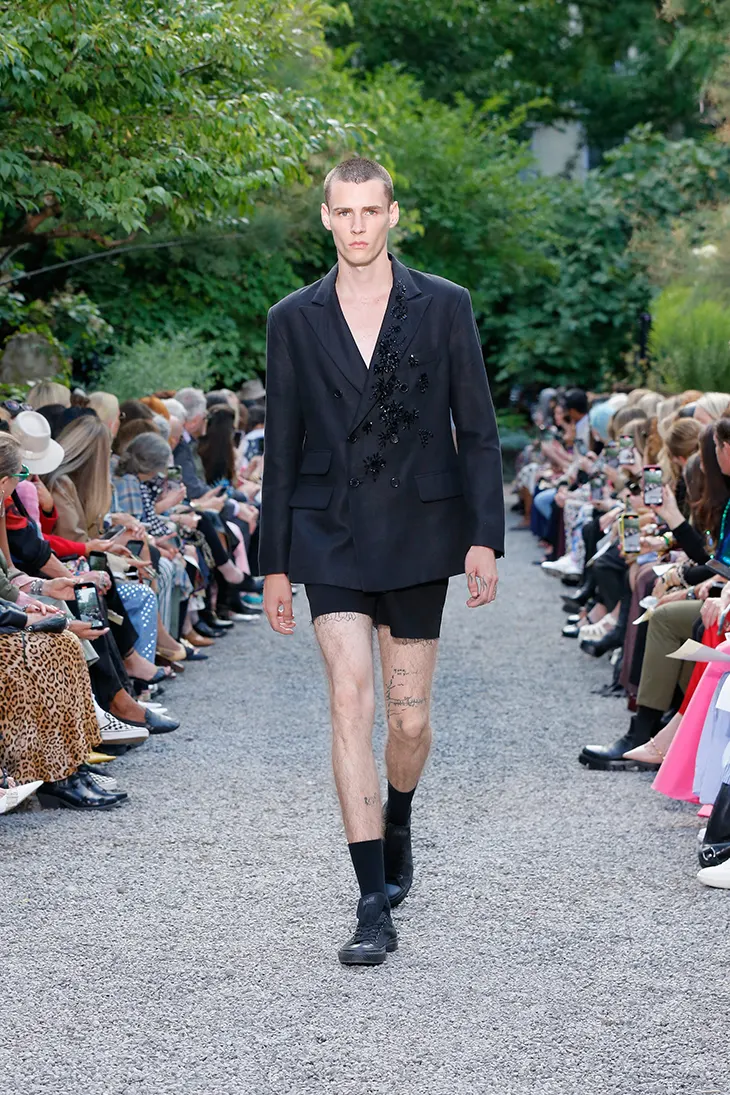
Throughout the presentation, Libertine emphasized its identity as an art-driven house. Hartig described every print, silhouette, and stitch as part of a larger story that positions clothing as more than surface decoration. For him, garments act as vessels of truth, carriers of beauty with the capacity to move culture forward.
The show invited its audience to reconsider fashion’s role. Hartig insisted that fashion cannot be dismissed as frivolous when it communicates beauty in an era marked by unrest. To design clothing with care and imagination is to practice a form of resistance.
